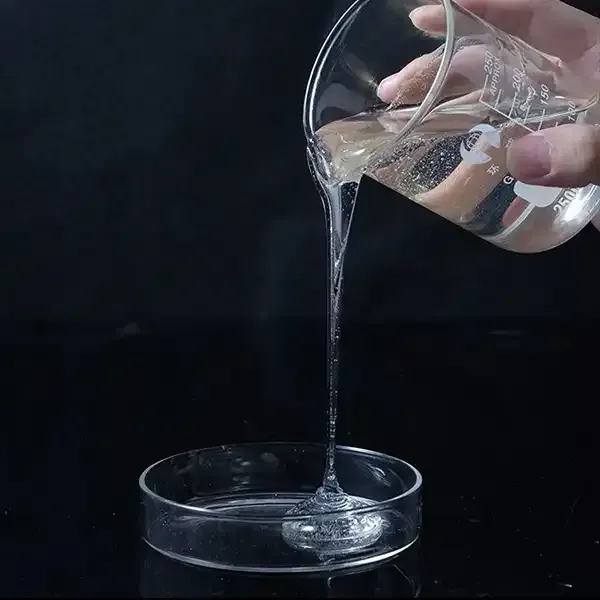Jul . 10, 2024 16:28
Back to list
High-performance grade of HPMC for construction applications with superior properties and performance characteristics.
Hypromellose (HPMC), also known as hydroxypropyl methylcellulose, is a versatile and widely used polymer in the pharmaceutical and construction industries. It is a non-ionic cellulose derivative that is derived from cellulose through a series of chemical reactions. HPMC is commonly used in construction materials, such as cement, mortar, and tile adhesives, due to its excellent properties and benefits.
One of the main uses of HPMC in construction is as a binder in cement-based materials. HPMC improves the workability and cohesion of cement mixtures, making them easier to handle and apply. It also helps to reduce water loss during the setting process, resulting in stronger and more durable structures. Additionally, HPMC enhances the adhesion of cement to various substrates, such as bricks, tiles, and stones, improving the overall performance of the material.
Another important application of HPMC in construction is as a thickening agent in mortar and tile adhesives. HPMC increases the viscosity of these materials, preventing sagging and ensuring proper coverage on vertical surfaces. This property is essential for achieving a uniform bond between tiles and substrates, as well as for preventing slippage during the setting process

construct grade hpmc. Moreover, HPMC improves the open time of mortar and adhesives, allowing for better workability and adjustment of tiles before they set. In addition to its binding and thickening properties, HPMC also acts as a water retention agent in construction materials. By forming a protective film around cement particles, HPMC helps to retain moisture in the mixture, promoting proper hydration and curing of the cement. This results in reduced shrinkage, cracking, and efflorescence in the final product, ensuring long-term durability and stability of the structure. Furthermore, HPMC provides excellent compatibility with other additives and admixtures commonly used in construction, such as plasticizers, air-entraining agents, and superplasticizers. This versatility allows for the formulation of customized products with tailored properties to meet specific performance requirements, such as improved workability, strength, and durability. Overall, HPMC plays a crucial role in the formulation of high-quality construction materials, providing numerous benefits that enhance the performance and durability of cement-based products. Its unique properties make it an essential ingredient in various applications, including cement mixtures, mortars, and tile adhesives. As the construction industry continues to evolve and demand for sustainable and high-performance materials increases, HPMC will undoubtedly remain a key component in the development of innovative and advanced construction solutions.

construct grade hpmc. Moreover, HPMC improves the open time of mortar and adhesives, allowing for better workability and adjustment of tiles before they set. In addition to its binding and thickening properties, HPMC also acts as a water retention agent in construction materials. By forming a protective film around cement particles, HPMC helps to retain moisture in the mixture, promoting proper hydration and curing of the cement. This results in reduced shrinkage, cracking, and efflorescence in the final product, ensuring long-term durability and stability of the structure. Furthermore, HPMC provides excellent compatibility with other additives and admixtures commonly used in construction, such as plasticizers, air-entraining agents, and superplasticizers. This versatility allows for the formulation of customized products with tailored properties to meet specific performance requirements, such as improved workability, strength, and durability. Overall, HPMC plays a crucial role in the formulation of high-quality construction materials, providing numerous benefits that enhance the performance and durability of cement-based products. Its unique properties make it an essential ingredient in various applications, including cement mixtures, mortars, and tile adhesives. As the construction industry continues to evolve and demand for sustainable and high-performance materials increases, HPMC will undoubtedly remain a key component in the development of innovative and advanced construction solutions.
Latest news
-
Premium Detergent Grade HPMC Hydroxypropyl Methylcellulose: Superior Thickening & StabilityNewsAug.31,2025
-
HEC 100000 Hydroxyethylcellulose for Paint | Superior ThickeningNewsAug.30,2025
-
Wall Putty Rdp Powder Packaging DesignNewsAug.29,2025
-
Introduction to Hpmc Hydroxypropyl Methyl CellulosNewsAug.29,2025
-
Hpmc Industri Grade IntegrationNewsAug.29,2025
-
How to Choose the Right Construction AdhesiveNewsAug.29,2025




